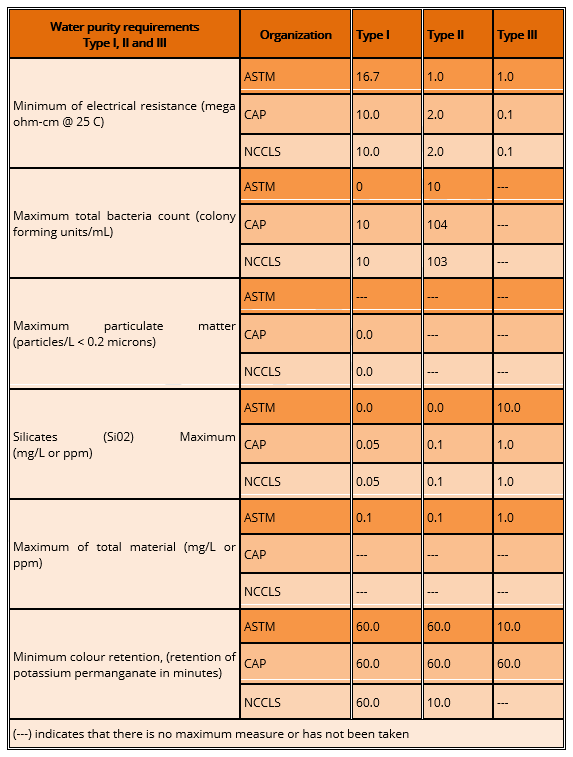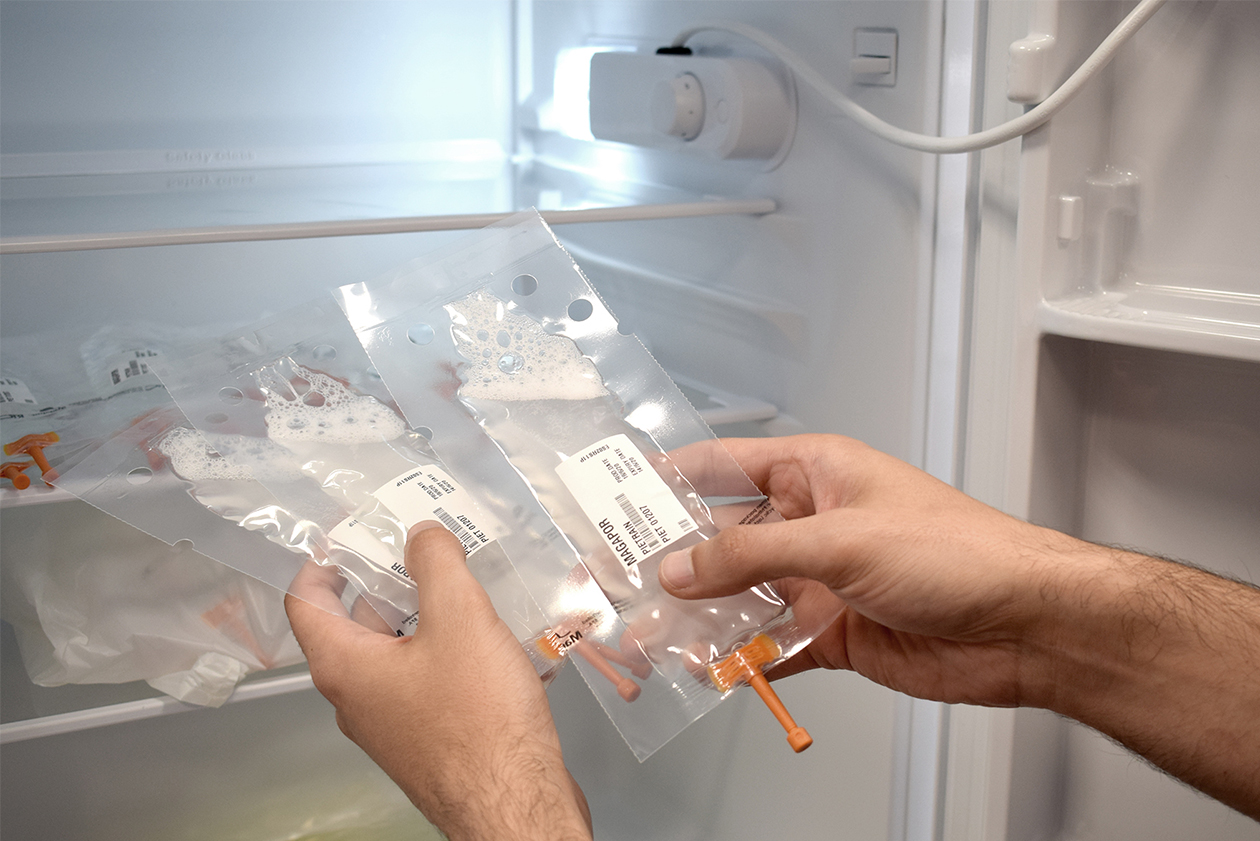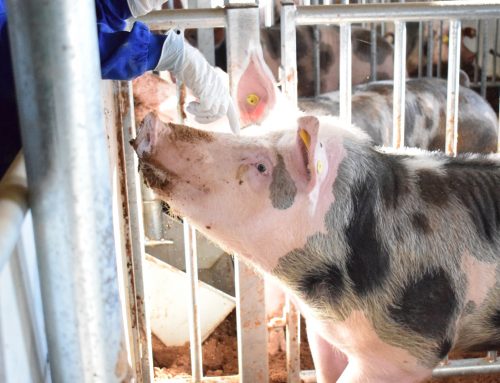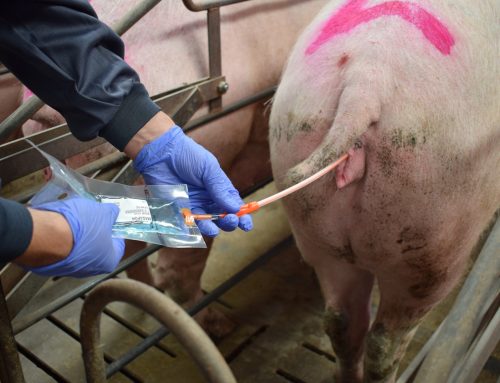Water quality and specific parameters
Regardless of the type of water used, Magapor recommends that certain minimum must be met:
Conductivity: <5 µsiemens/cm
pH: 5-8
Calcium hardness: <3 mg CaCo3/liter
Presence of bacteria: <30 cfu/ml
There are 3 organizations that speak of more specific parameters: American Society for Testing and Materials (ASTM), College of American Pathologists (CAP), the National Committee for Clinical Laboratory Standards (NCCLS) and a 4th, International Organization for Standarization (ISO). All of them have published specifications for water quality and methods for preparing water of a specific quality. Between each organization there are slight differences between the standards, but in general the quality of the water is classified in Type I, Type II and Type III.
Type I: This is the type with the highest purity level and generally requires a combination of deionization with distillation, filtration, and reverse osmosis. It is commonly used in the analysis of trace metals that require a minimum of ionized components.
Type II: it can be obtained by various treatments, always taking into account the quality of the initial water. It is used for processes that require water free of organic contamination and pyrogens.
Type III: Used for most general laboratory procedures, including preparation of stock solutions and washing of samples and analytical materials. It is obtained in various ways.
Tipo II: se puede obtener mediante diversos tratamientos, siempre teniendo en cuenta la calidad del agua inicial. Es aquella que se utiliza para procesos que requieren agua libre de contaminación orgánica y pirógenos.
Tipo III: se utiliza para la mayoría de los procedimientos generales de laboratorio, incluyendo la preparación de las soluciones madre y de lavado de las muestras y materiales de análisis. Se obtiene de diversas maneras.
Recommendations according to ASTM, CAP and NCCLS:

Recommendations according to ISO:




